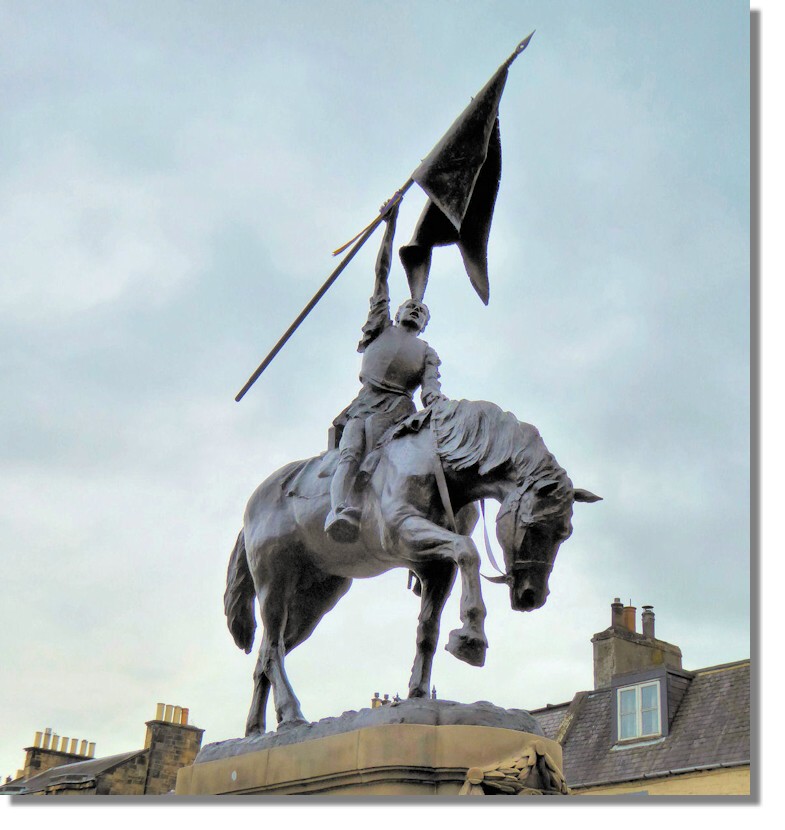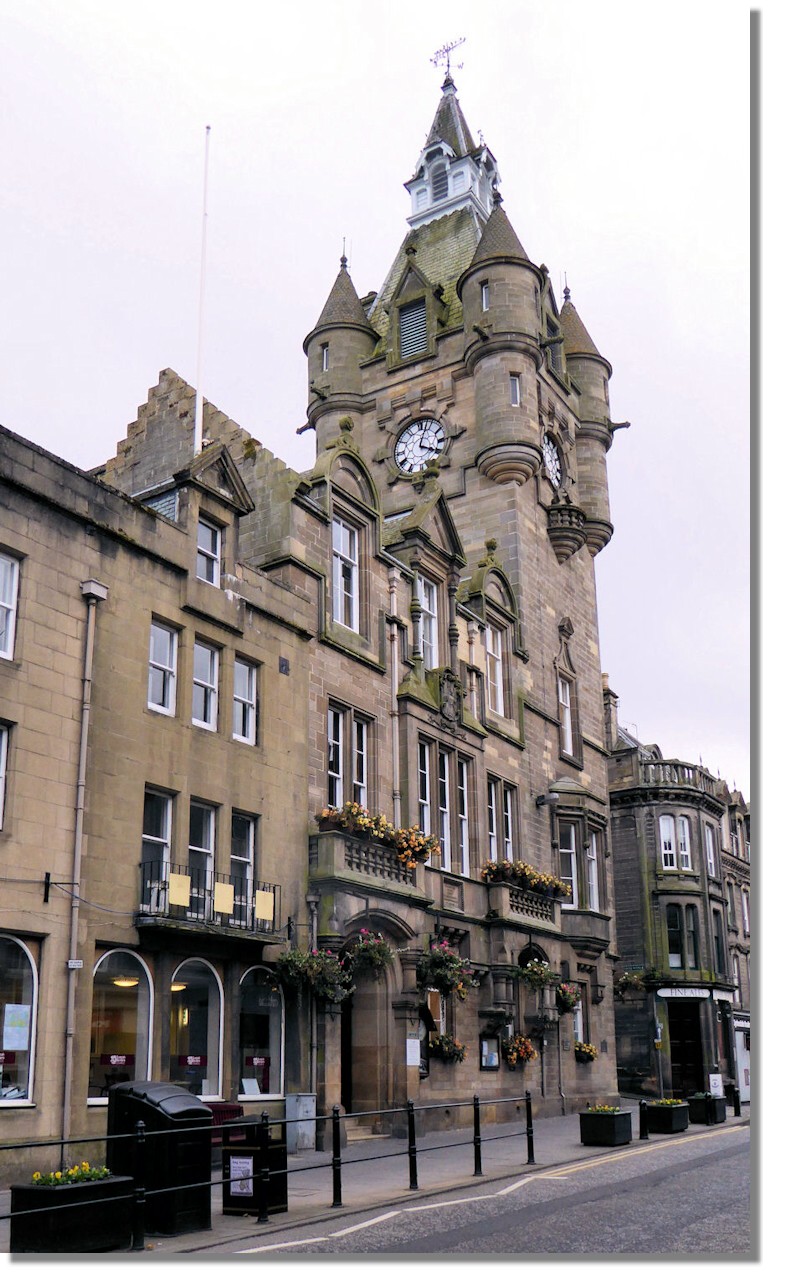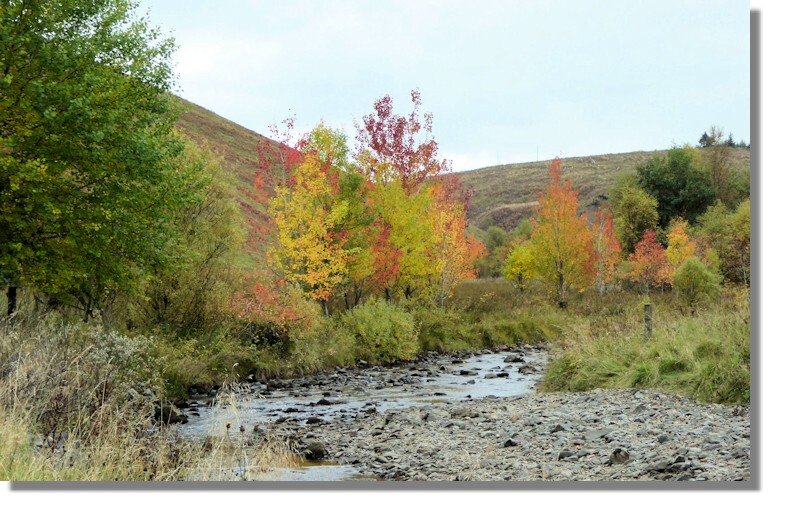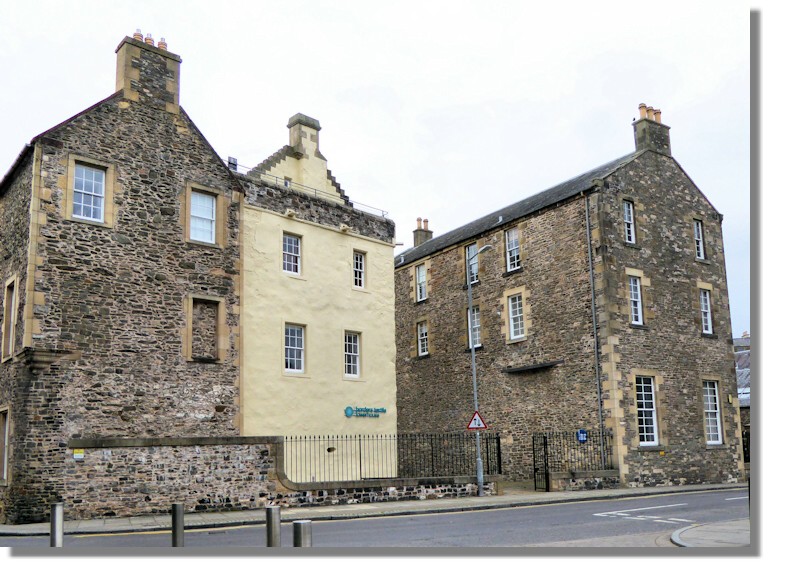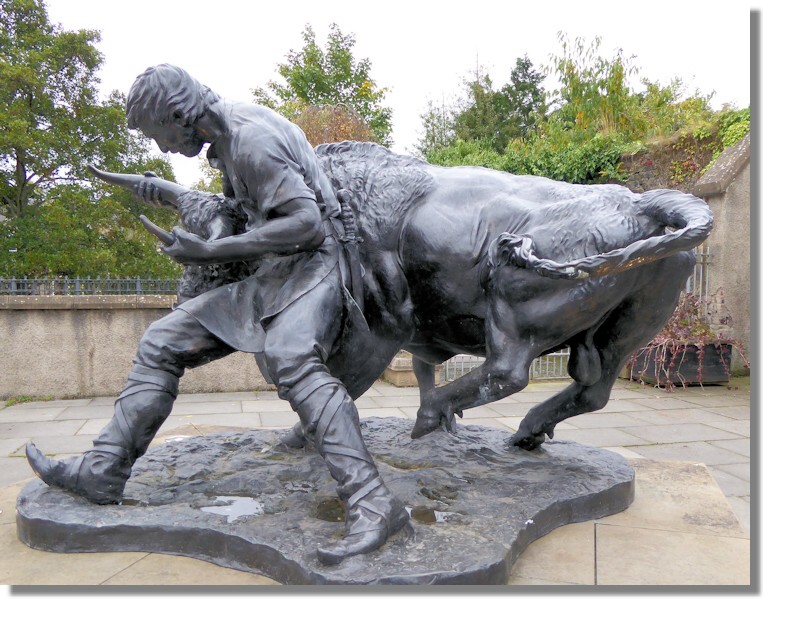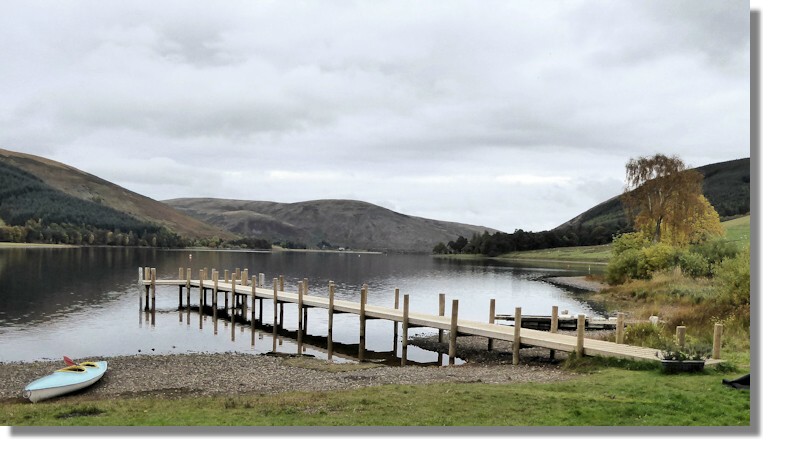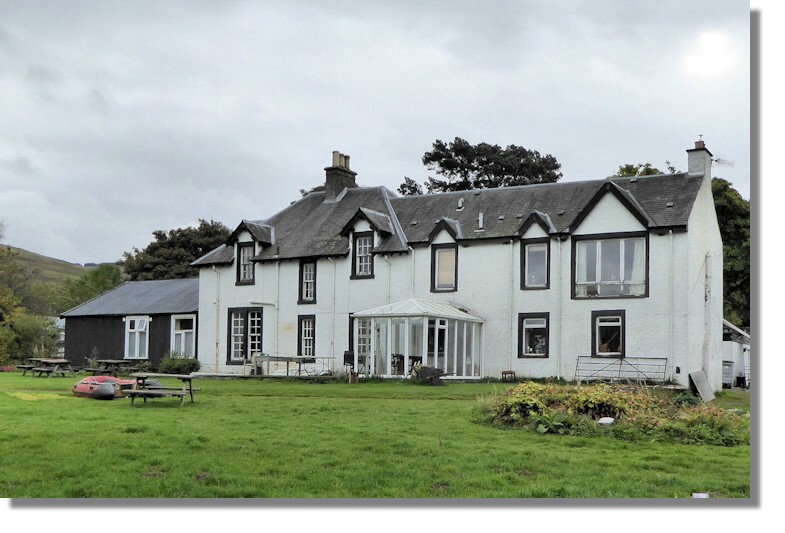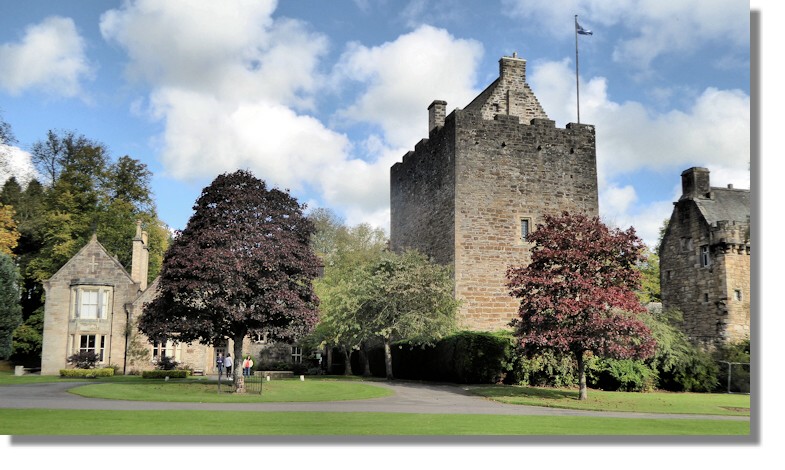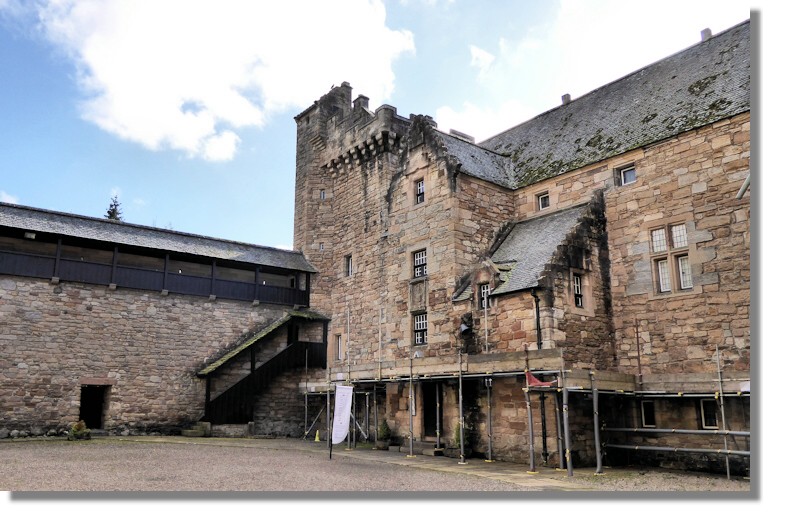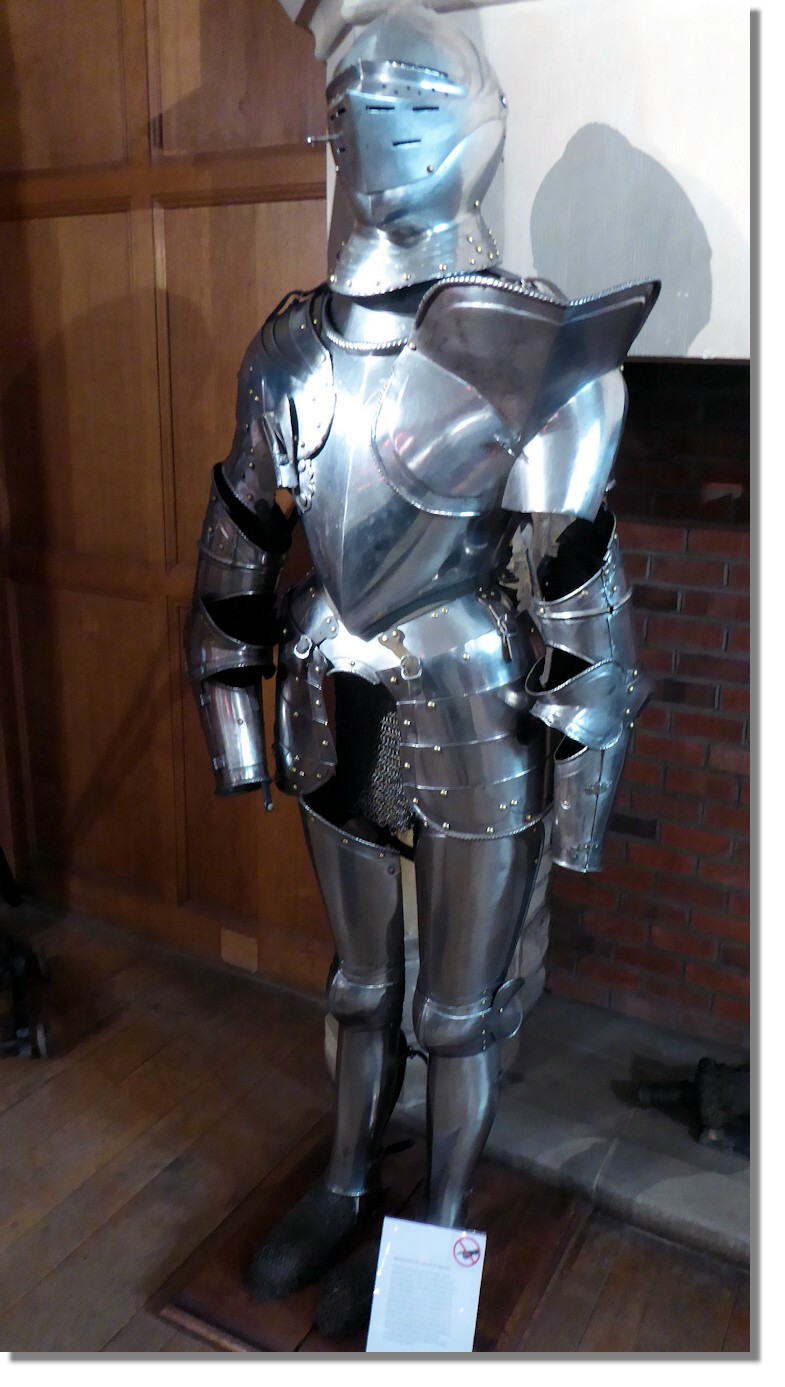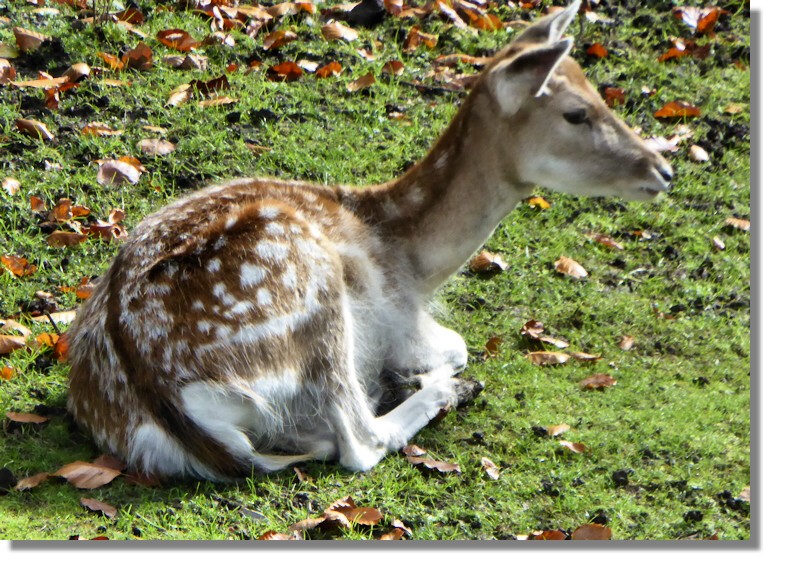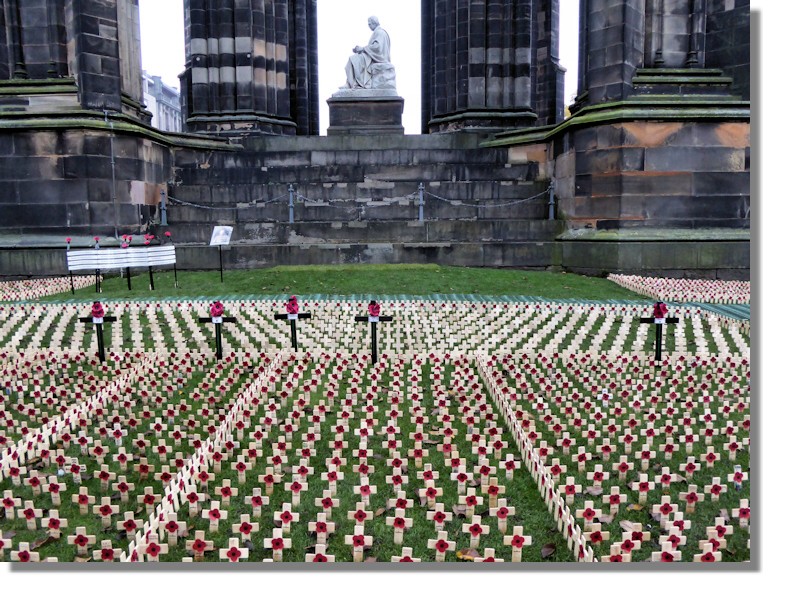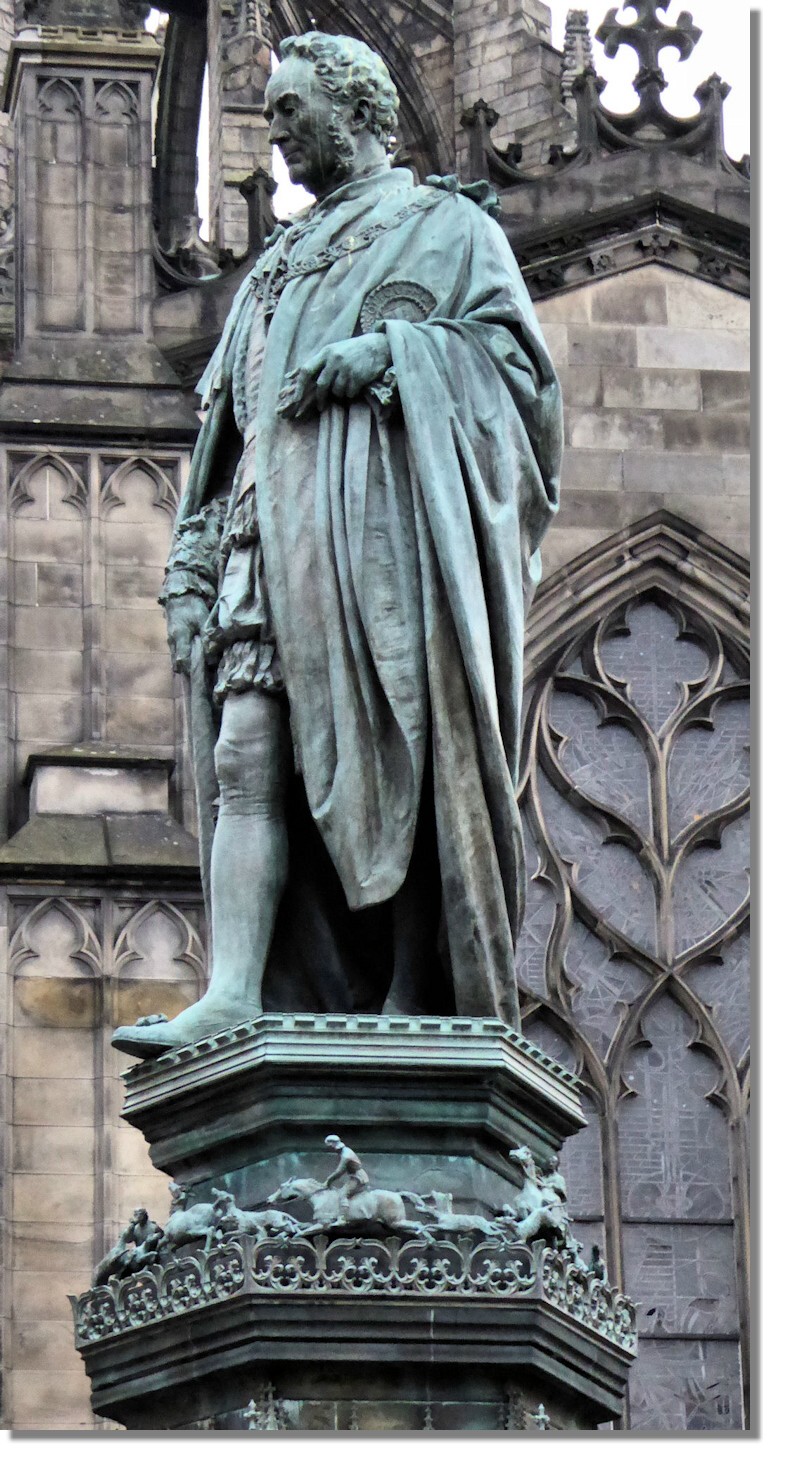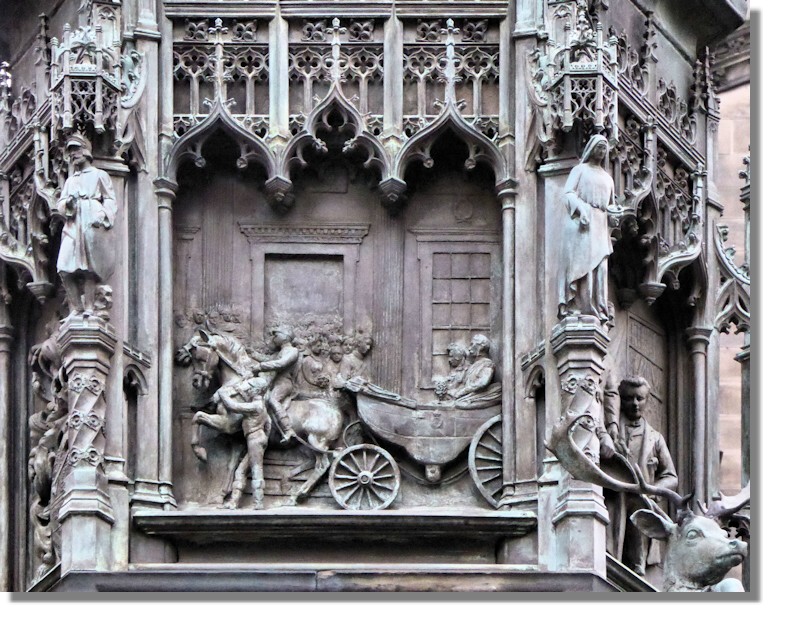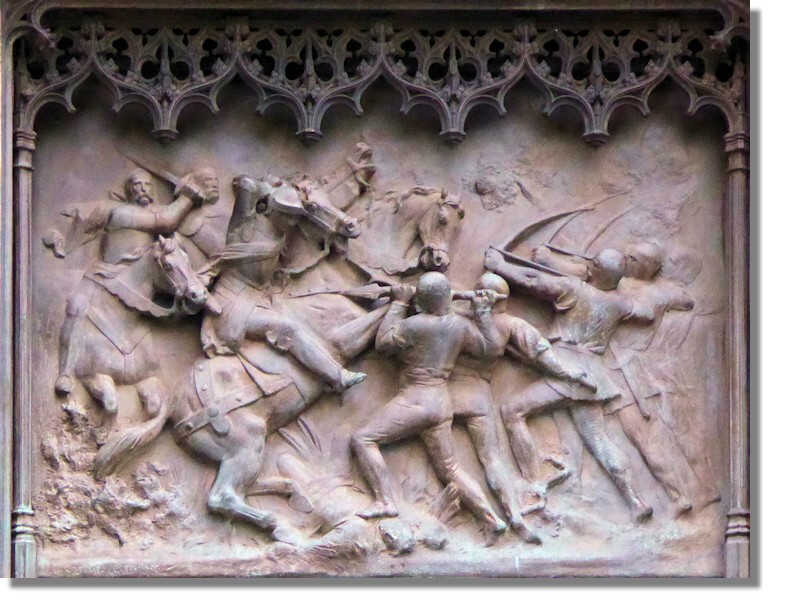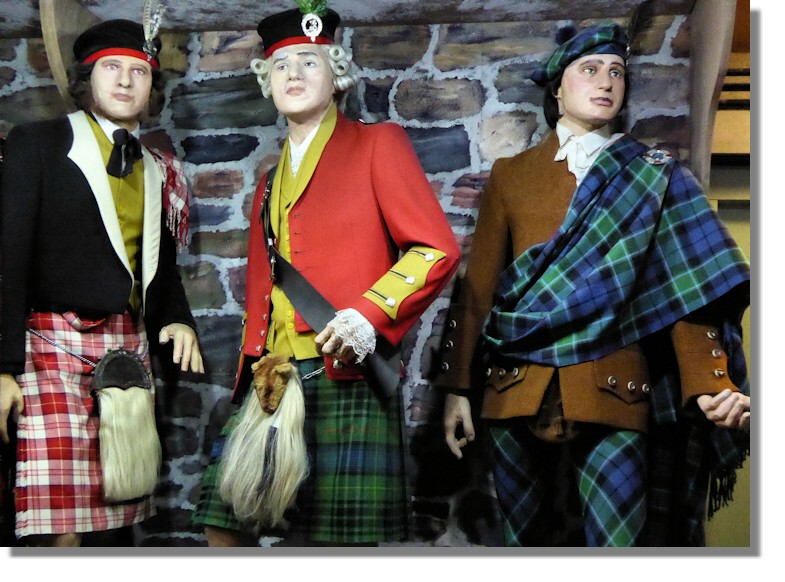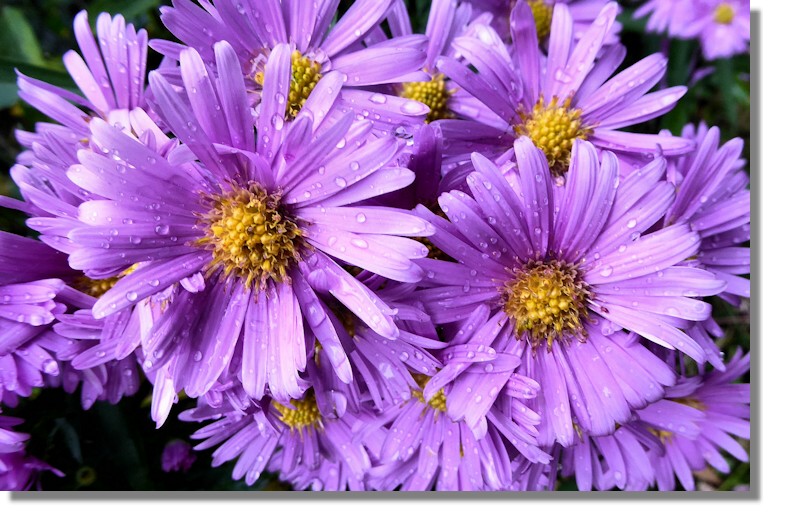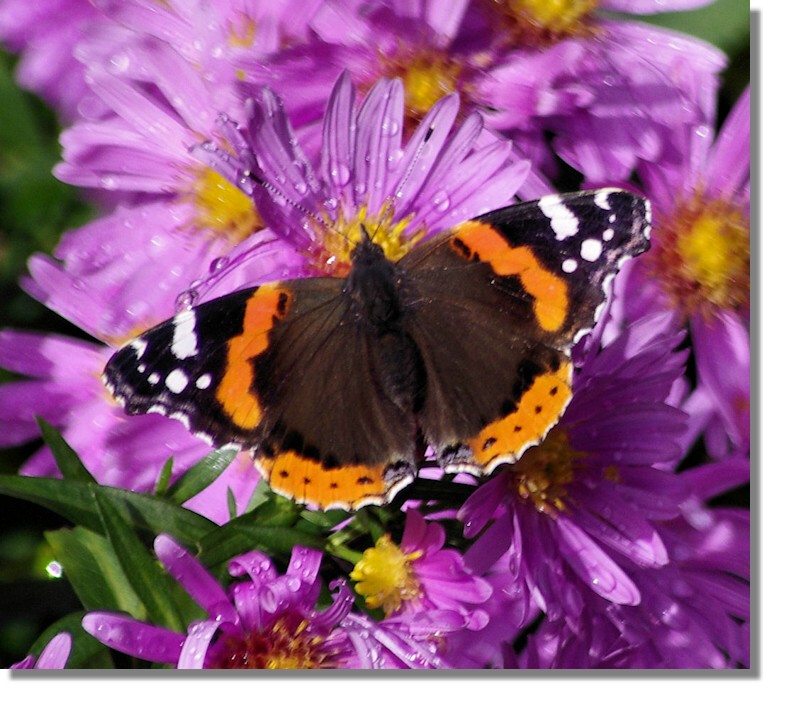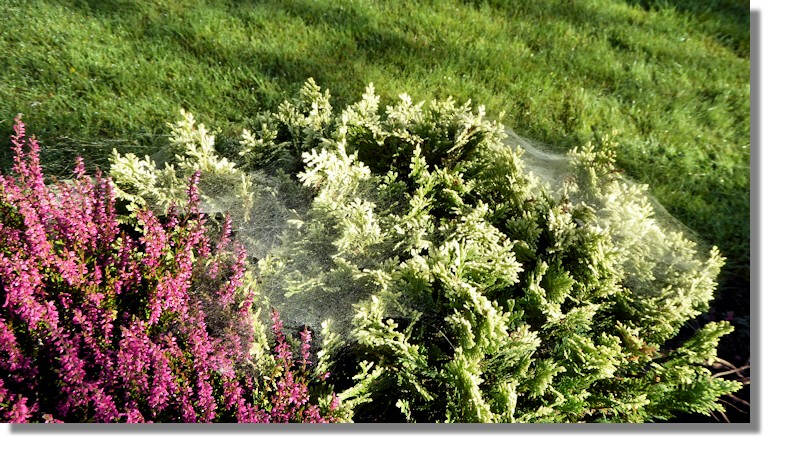Scottie's Photo Diary
- October 2015
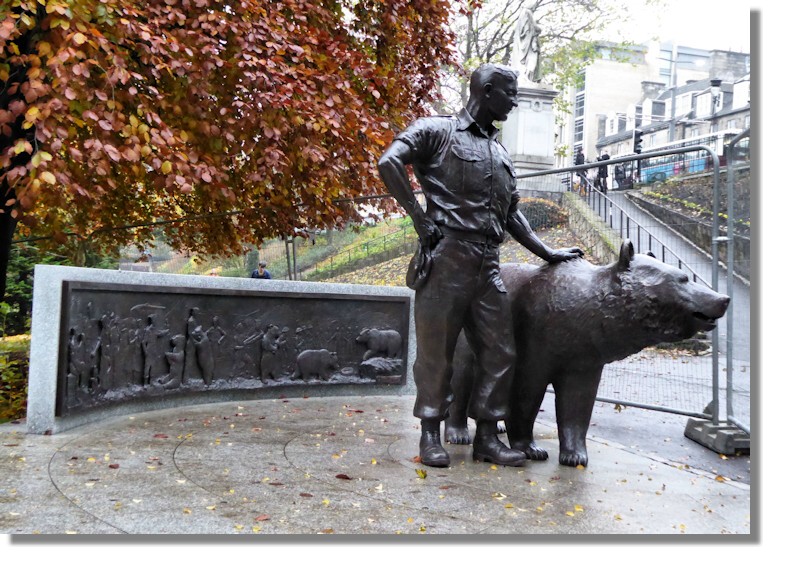
Wojtek, the Polish Army Bear Mascot
Background
I never go anywhere in Scotland without my camera and I take photographs wherever I go. Sometimes I go somewhere specifically to take photographs with a view to adding another page to the Rampant Scotland site. On other occasions I just see something that makes an attractive picture or else it's another graphic to add to the library to perhaps use on a future occasion. This is a selection of the best photographs I took in the second half of May 2011 with a commentary on each one. It thus forms a pictorial diary of my travels during the month which can be shared by everyone!This is a selection of photographs I took in October 2015.
Scottish Borders
In 1513 King James IV of Scotland rashly invaded England, supposedly to help France. But the Scots were soundly defeated at Flodden, sustaining huge losses not just of rank and file soldiers but many of the nobility as well. So in the following year Scotland was left in a vulnerable state and of course an English force came north, probably expecting "easy pickings". But against all the odds, when English were camped at Hornshole (a name derived from "Heron's Hole"), around two miles from Hawick in the Scottish Borders, youths from the town gathered weapons and set off to confront them, attacking at night and soundly defeated the raiders. During the battle, the pennon carried by the English raiders was captured and taken as a trophy by the victors. Today, Hawick's coat of arms bears a pennon inscribed with '1514', the year of the battle. This impressive statue named just "The Horse" depicts one of the Hawick riders returning from the skirmish holding aloft the captured English banner. The Hawick Border Common Riding, held in early summer, honours this event and 'The Horse' becomes the centrepiece for this symbolic festival.
Hawick Town Hall is in the Scots "baronial style" which is common across the country for such official buildings - Renfrew and Dunfermline, for example have their city halls in a similar style.
When the Scott family established themselves in the Scottish Borders about 600 years ago they soon built a castle at a site between two burns - Rankil Burn (seen here is autumn colours) and Buccleuch Burn. Early titles of the Scott lairds initially used such names as "Lord of Rankilburn and Murthockston" but later the Buccleuch name became adopted and has been used by the Scott clan chief (along with other titles garnered over the centuries). The present head of the clan is Richard Scott, Duke of Buccleuch and Duke of Queensberry (he is one of only five people in the UK to hold two or more dukedoms).
An original tower was built in the latter half of the 12th Century by the Loval family before Sir William Douglas rebuilt ‘The Black Tower of Drumlanrig’ during the 1500’s. Anna, Duchess of Monmouth and Buccleuch, began extensive renovations in the early 18th Century, turning the fortified tower house into a larger, genteel residence. In 1773 it was converted into a commercial inn and throughout the 19th and 20th Centuries functioned as the Tower Hotel. 1995 saw the opening of Drumlanrig’s Tower museum, telling the story of Hawick’s turbulent past and some of the famous inhabitants. Then in 2009 the award-winning Borders Textile Towerhouse opened, celebrating the Borders’ textile past, present and future.
A recent addition to the statues on display in Hawick is this one marking the links with another Border family, the Turnbulls. Legend has it that in 1313 William of Rule turned a raging bull to save the life of King Robert the Bruce. The statue stands outside a new "Heritage Hub" in the centre of Hawick. William of Rule was knighted by King Robert as "Sir Turn e Bull" from which the surname Turnbull was derived. The story has similarities to the story of a John Scott who saved the life of King Kenneth III by killing a stag / buck in a ravine (a "cleuch" in local parlance) from which the name "Buccleuch" is said to have been derived.
St Mary's Loch is the largest natural loch in the Scottish Borders, and is situated on the A708 road between Selkirk and Moffat. It is the source of the Yarrow Water, which flows east from the loch to merge with the Ettrick Water above Selkirk. The loch takes its name from a church dedicated to St Mary which once stood on its northern shore. There is now a well sign-posted pedestrian walkway around the loch.
"Tibbie Shiel's Inn" is located on a stretch of land that separates St Mary's Loch and the smaller Loch of Lowes on the road between Moffat and Selkirk. The building was an 18th-century coaching inn, which was frequented by the Border poet James Hogg and Sir Walter Scott and the poet William Wordsworth also stayed there. The original Tibbie Sheil married a mole catcher and moved to St Mary's Cottage overlooking the loch. When her husband died she supported herself and her six children by taking in lodgers - reputedly anything up to 25 gusts at one time (although there were only 13 beds in the house at that time). Tibbie died at the grand old age of 95 but the guest house has continued - and been considerably expanded.
Dean Castle and Park, Kilmarnock
Located on the edge of Kilmarnock, Dean Castle is a well preserved 14th century keep with a 15th century palace block with a tower and curtain wall enclosing a courtyard. The adjoining three-storey house dates from the 17th century. In the 14th century, it was held by the Balliols but Robert the Bruce gave it to the Boyd family.
This is the view of the castle from within the curtain wall - restoration work is currently being undertaken, hence the scaffolding.
There is a museum in the castle with a collection of armour and musical instruments. This is one of the suits of armour on display known as "Maximilian Armour", a form of 16th century German plate armour. The fan shaped fluting was designed to imitate the pleated clothing that was fashionable in Europe at that time.
The castle and grounds were donated to the town of Kilmarnock in 1975 and there is now a pleasant country park with a children's corner and collections of farm animals and rare breeds. The park is a favourite with the locals in spring time when it has a mass of daffodils.
Edinburgh
As in recent years, there is a display of crosses with poppies on the grass on each side of the Scott Monument in Princes Street Gardens.
This imposing statue is of Walter Montague Douglas Scott, the 5th Duke of Buccleuch and 7th Duke of Queensberry (1806 – 1884) stands in Parliament Square, near St Giles and shows him in the robes of the Order of the Garter. It was unveiled in 1888.
The above statue is supported by an ornate pedestal with bronze reliefs of scenes from the Duke's life and also of episodes in the Scott family history. This one shows the Duke in a carriage on the way to be installed as Chancellor of Glasgow University.
There are a number of graphic scenes from the history of the Scott clan - this one (I think) is of the death of Sir Walter Scott, fourth Lord of Rankilburn and Murthockston at the Battle of Homildon Hill in 1402.
I recently came across a reference to a Tartan museum in Edinburgh but when I went to the address in Princes Street I found the building had been redeveloped. I eventually found a on the Royal Mile next to Edinburgh Castle. The five-storey building certainly sells lots of tartan goods and souvenirs and there is a working loom clanking away too. I asked a few of the assistants where the Tartan Museum was located and got blank looks... Eventually I was directed to a small collection of mannequins dressed in "tartans through the ages". This group represents 1790, 1800 and 1850. The model representing 1790 on the right is wearing tartan trews (trousers) supposedly to illustrate the banning of the tartan kilt after the 1745 uprising - except the ban was on all tartan, including trews...
This is the newest piece of sculpture on public display in Edinburgh. It is of "Wojtek" - a Syrian brown bear adopted by Polish soldiers during WWII and became an unofficial mascot. During the Battle of Monte Cassini, Wojtek helped to move crates of ammunition. Following the end of World War II, Wojtek was transported to Berwickshire in Scotland and the Polish-Scottish Association made him one of its honorary members. Wojtek was given to Edinburgh Zoo, where he spent the rest of his life. Wojtek has been commemorated in London, Ottawa and Kraków in Poland. Now a monument has been placed in Princes Street Gardens in Edinburgh. The relief behind the bear and a Polish soldier is a relief showing his journey from Egypt to Scotland with the Polish army.
My Own Garden
As winter approaches the number of flowers in my garden inevitably declines but this Michaelmas Daisy really starts to shine at this time of year - and the perennial wallflower which began to flower in the spring is still producing new blossom. And there's always one or two of the heather varieties flowering at any one time in the garden
These flowers were just what some Red Admiral butterflies were looking for. So much so that after a poor summer for butterflies we had the delight of up to four butterflies feeding on the daisies and wallflower.
Normally we don't see the cobwebs that are constantly being built in the garden vegetation. But that early morning mist clung to the spider webs and showed up clearly on plants such as these heathers and slow-growing conifer.
If you want to read the other Diary entries going back to 2009, there is an Index page.
